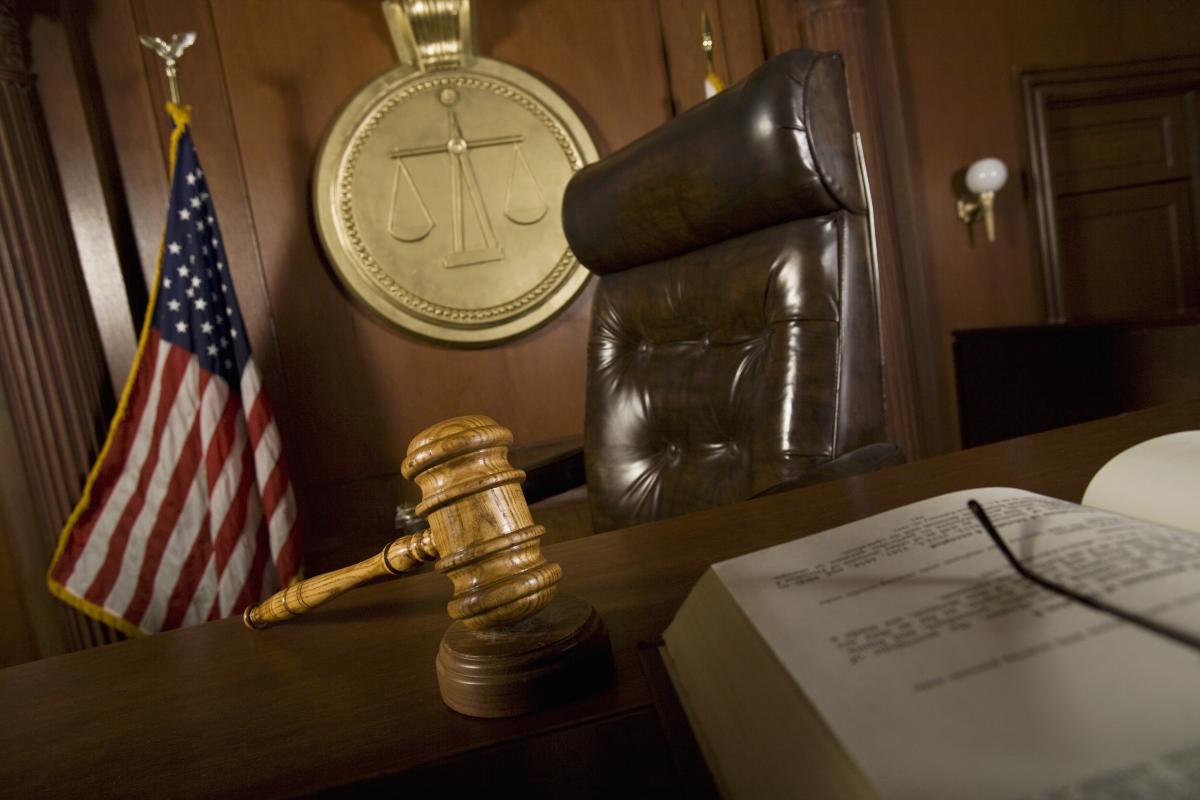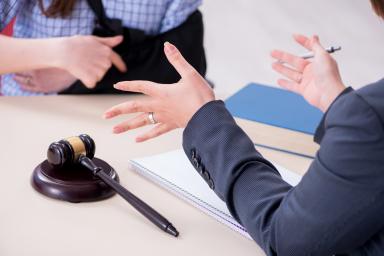How Often Do Slip-and-Fall Cases Go to Trial?

According to the Centers for Disease Control and Prevention, over 800,000 patients a year are hospitalized because of a fall injury. Injuries can range from scrapes and bruises to severely broken bones. However, despite the high number of injuries resulting from falls, only about 5% of slip-and-fall cases end up going to trial. Most often, these kinds of cases are settled outside of court. Your case will require strong evidence and negotiation skills from your attorney to prove that your fall could have been prevented. In this article, we will break down the timeline of a slip-and-fall case and what causes that small percentage to go on to trial.
The Stages of a Slip and Fall Lawsuit
Lawsuits are a complex process that need to be handled timely and accurately. The section below explains the timeline of a slip-and-fall lawsuit from the first step through the settlement or trial.
Demand Letter
Before anything else, an attorney will begin with a demand letter. This letter is sent to the at-fault party and/or their insurance company with the details of how their negligence caused the fall and resulting injury. Further, this letter will outline the amount of money you are asking for in compensation for your injury. Before proceeding with a lawsuit, it is possible for the insurance company of the party responsible for the incident to negotiate and resolve the case.
Complaint
A complaint is a legal document that outlines your claim. The complaint will include who you are, the defending party, the details of the injury (where it happened, what happened), and the negligence performed by the at-fault party that resulted in your injury. This letter is then sent to the defendant to be shared with their insurance and legal team, along with a court order to answer, called a summons.
Response
The response is the other party's reply to your complaint. In this response, you will receive the defendant's side of the story. They may take responsibility and admit fault or deny it altogether. The defendant may respond by making a counterstatement. For example, the response could allege that you were partially at fault or deny the claim outright. If you have requested compensation, the defendant may accept your offer or make a counteroffer to settle the case. This is where your attorney will begin the first of many negotiations. If they take the initial response, the action will move on to a settlement. If there is still a disagreement, the process proceeds with an exchange of information.
Exchange
We’ve reached the information exchange part of the trial. Both parties exchange documents, depositions, and written questions to be responded to by the other party. This might be the evidence that was collected initially after your fall, such as photos of missing rails on stairs, a leak that formed a puddle, or medical documents describing your injury and its cause.
Pre-Trial Motions
If the opposing party withholds their documents or your questions are unanswered, your attorney may file pre-trial motions. These motions petition the judge to order the parties to comply with document requests.
Settlement
At this point, the trial will go one of two ways, the first being a settlement conference. This is a meeting between the two parties and the judge to discuss and aim for a resolution. These conferences often occur shortly before a trial date and give both parties a chance to avoid the in-court process by agreeing upon fault and compensation.
Trial
If both parties involved, the defendant and the plaintiff, cannot come to a settlement and agree on a trial, a trial will proceed. In a trial, all the details are presented in front of a judge or jury, and they will decide who is at fault for your injury and the amount of compensation (called damages in legal speak) you will receive.
Suing a Small Business vs. Corporation
When you enter into a lawsuit with a corporation, know that even though the payout has the potential to be higher, more money comes with better lawyers on their side. Further, they have the time, ability, and capital to draw out cases and make appeals in an effort to reduce your compensation and cover up their negligence. An experienced lawyer will be able to look at your case and let you know whether or not it is worth the fight financially. Make sure to ask your attorney about their case experience to ensure they have worked and succeeded with cases similar to your own.
What Causes a Slip and Fall Case To Go to Trial?
It is rare for slip-and-fall cases to move to a full trial, but it is still possible. It could be a disagreement between the fault or a hazard that was ignored by the business and could cause harm to others in the future. Below, we’ll dive into a few of the reasons a slip-and-fall case might go to trial.
Proving Fault
The most common cause for trial is a disagreement about who is at fault for the injury. Sometimes, there may not be enough evidence provided during the exchange period to make the defendant feel as though they are at fault. For your injury case, your attorney must prepare a strong argument with supporting evidence as soon as possible. This will help the defendant understand the extent of their negligence and how it caused your injury. To make this easier on yourself, try to take photos of your surroundings and seek medical attention to begin collecting evidence for your attorney to use immediately following the injury.
Negligence
When you step into a business, there is a reasonable expectation that the store will provide a safe experience. However, there are many instances where the business does not uphold that standard. For example, if you were to slip and fall on a wet floor that the business was aware of and did not address, they have breached their duty of care in protecting you. Pre-existing hazards that were unaddressed by the staff count as negligence on the part of the company and breaches their duty of care or responsibility to provide a safe environment for clientele and workers alike.
Accountability
If the details surrounding your case are truly negligent and could potentially cause harm to others, the insurance company, you, or your attorney may feel the need to pursue a full trial to set a precedent for future cases. Although uncommon, it is possible for companies to exhibit negligence by disregarding their responsibility to provide a safe environment for both employees and customers. In these cases, your lawyer would be confident that there is a strong case and might deny the other party's request to settle in order to have justice served.
How To Find a Slip and Fall Lawyer
Slip and Fall cases are complicated and require a lot of details and evidence to be successful. An experienced slip-and-fall lawyer knows what information to gather and how to translate your injuries into a compensation demand. They will fight for you to ensure you can get back on your feet following a fall. Check out Expiertise.com’s attorney directory to find a lawyer in your area.
Expertise.com StaffAuthor
Step into the world of Expertise.com, your go-to hub for credible insights. We don't take accuracy lightly around here. Our squad of expert reviewers, each a maestro in their field, has given the green light to every single article you'll find. From rigorous fact-checking to meticulous evaluations of service providers, we've got it all covered. So feel free to dive in and explore. The information you'll uncover has been stamped with the seal of approval by our top-notch experts.

![How Much Does a Slip-and-Fall Lawyer Cost? [2023] DUP IMAGE](https://images.ctfassets.net/k00sbju4hbzq/6VjmgolPspyVjYLOfVY4wl/a1f9b84358d5e0069656c41ac3e63e96/Depositphotos_260604210_XL.jpg?fit=fill&w=384&q=75)


